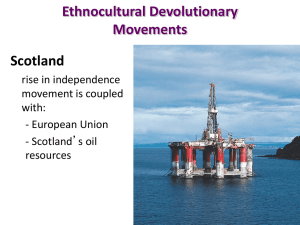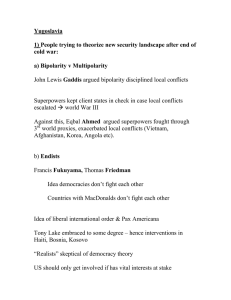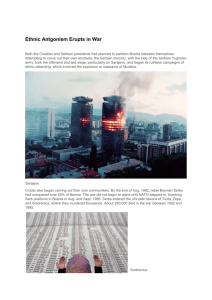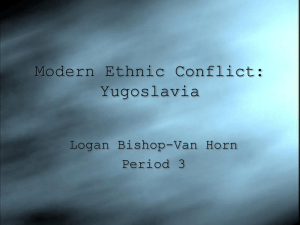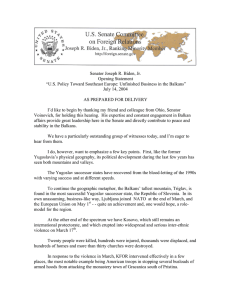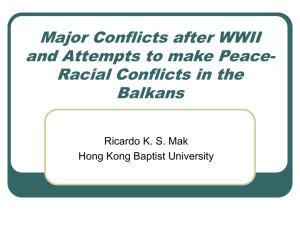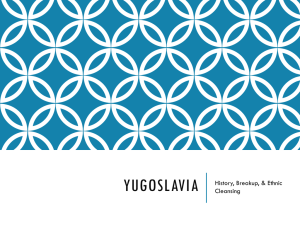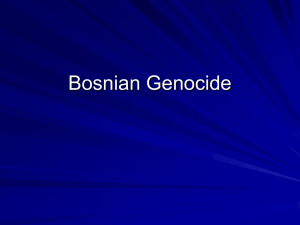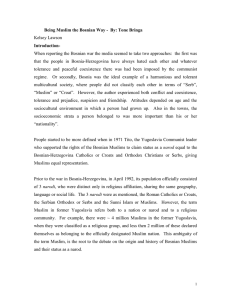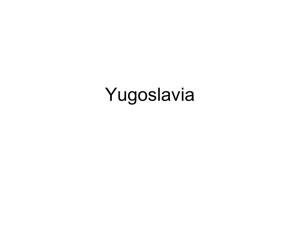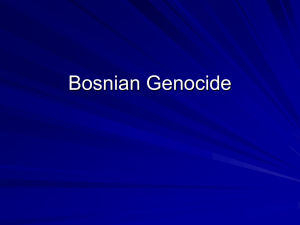Bosnian Genocide - UM
advertisement
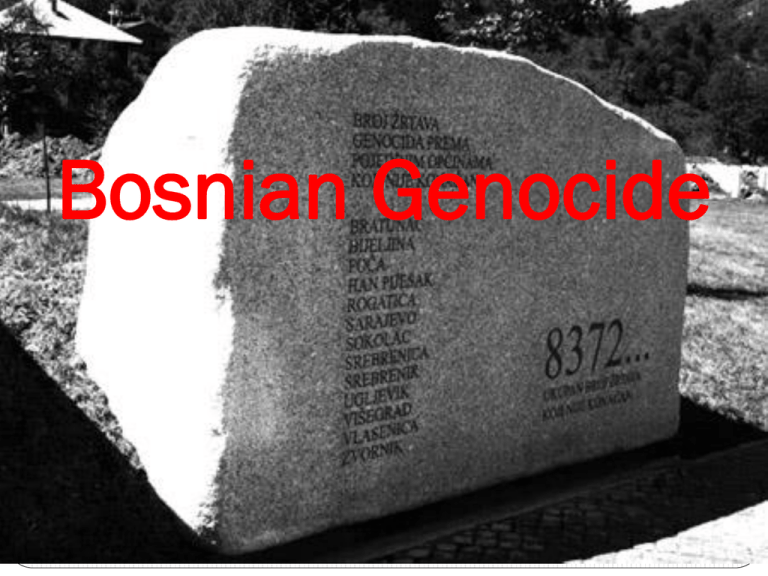
Bosnian Genocide Yugoslavia After World War II, the Balkan states of BosniaHerzegovina, Serbia, Montenegro, Croatia, Slovenia and Macedonia became part of the Federal People's Republic of Yugoslavia. Josip Broz Tito Led Yugoslavia to be a great ally and economic leader After the death of longtime Yugoslav leader Josip Broz Tito in 1980, growing nationalism among the different Yugoslav republics threatened to split their union apart Independence Yugoslav Wars Start Slovenia and Croatia gain independence Bosnia Herzegovina pass a referendum for independence Bosnian Serbs boycott the referendum. Bosnian Serbs established their own republic the Republika Sprska with help of Slobodan Milosevic’s Serbian Government and the Yugoslav People’s Army (JNA) without the consent of Bosnia Fighting Starts Repulika Srpska, Serbian government, and the Yugoslav People’s Army decide to mobilize their force against the Army of the Republic of Bosnia and Herzegovina Slobodan Milosevic, the President of Serbia and Radovan Karadzic, the President of Republika Srpska initiate “Ethnic Cleansing Campaign” which targeted the Bosnian Muslims and Bosnian Croats WHY? Slobodan Milosevic, who became Serbia’s leader in 1987, had intentions to become the leader of Yugoslavia by encouraging Serbian Nationalism in Serbia and in other Yugoslav states such as Bosnia How? Both Serbia and the Bosniak women & girls Republika of Srpska had exterminated an estimate of 200,000 Bosniaks from 1992- 1995 Bosniak men & boys were sent to concentration camps the Keraterm, Uzaminca and Omarska were sent to Rape Camps like Vilina Vlas Both genders were sent to Extermination camps like Omarska, after exploitation of physical and sexual work United Nations Deployed troops to protect the distribution of food and medicine to dispossessed Muslims. Troops were not allowed to interfere militarily against the Serbs, even though the U.N. could eerily predict when each town or village was going to fall. Srebrencia 16 April 1993, the United Nations declared it a safe area. "all parties and others concerned treat Srebrenica and its surroundings as a safe area which should be free from any armed attack or any other hostile act" Srebrencia Serbs shell the city The United Nations General Ratko Mladic retreats and leaves the city unprotected. In a matter of days Serbs kill over 8000 Muslim men and boys US spy planes see evidence of mass graves enters Srebrenica to claim the town for the Bosnian Serbs. UN seperates men from women and children Men are to be questioned for war crimes by Serbs U.S. Response US leads a NATO Air Campaign against Serbs in response to Srebrencia September to October Faced with the heavy NATO bombardment and a string of ground losses to the Muslim-Croat alliance, Serb leader Milosevic was now ready to talk peace. After three weeks of negotiations, a peace accord was declared. The agreement called for democratic elections and stipulated that war criminals would be handed over for prosecution. 60,000 NATO soldiers were deployed to preserve the cease-fire. Facts 1 March 1992 – 14 December 1995 At least 200,000 killed Over 2 million people displaced from their homes 30 people have been indicted for participating in genocide
